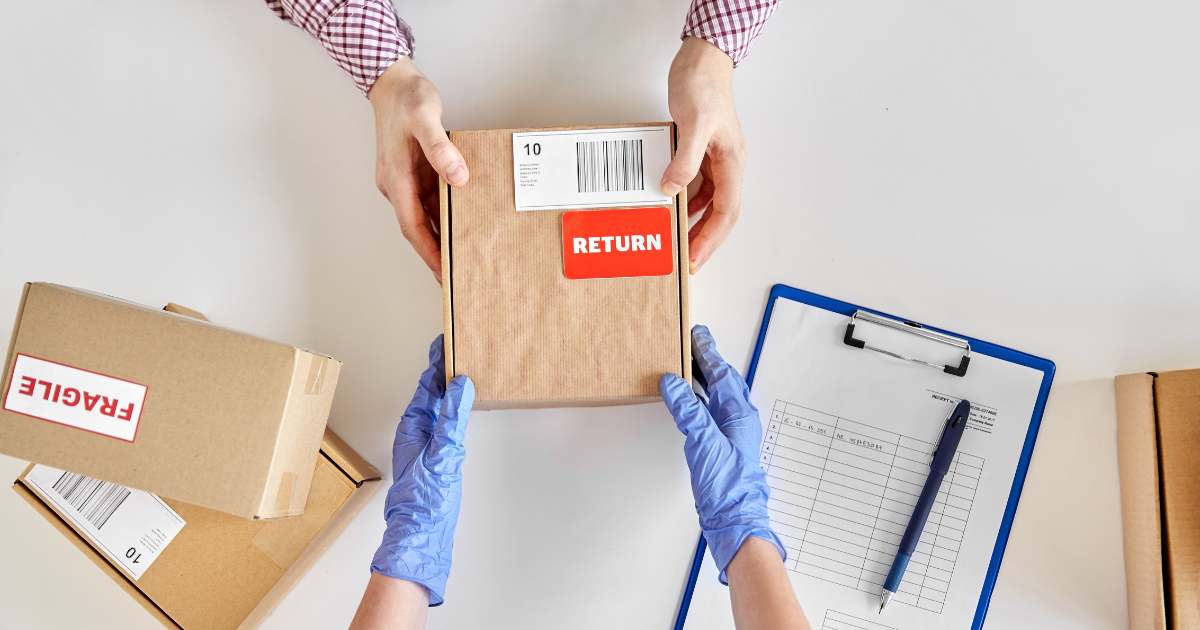
Online shopping is incredibly convenient. You search for an item, add it to your cart, check out, and receive it a few days later. But the drawback of e-commerce is that you can’t fit a clothing item, feel the material, smell or touch the product. Sometimes, this means the item is not what you expected: maybe the pair of shoes is too small, the jacket too big, or the pillow cases are the wrong colour. Your lavender-scented candles might even smell more like candy than lavender! Whatever you bought, regardless of shape or size, you can return it.
The above scenario makes complete sense to consumers, so why not, as a business owner, make this possible? This is exactly where reverse logistics and return management come into play.
Planning for Customer Returns
First of all, “returns” is not a bad word. Upon hearing it, you might automatically assume that the client is angry at most, dissatisfied at best. However, this might not be the case. The item might just be the wrong colour or size (Although a mistake like shipping the wrong item, or receiving a broken product can occur too).
This is the most likely issue, as e-commerce stores can do their best to add the right information, offer reviews that vouch for the available details and show pictures of the item, it can easily appear different on the other side of your shopper’s screen – remember the blue and black or gold and white dress saga? Imagine if that occurred in an online store!
Therefore, planning ahead for the possibility that a customer might like to return their purchase is just another aspect of good customer service. It is also called return management.
Return Management and Return Logistics
When it comes to clientele returning products to the seller, there are two terms that you need to understand.
Return Management: This is the process of receiving the returned product from the customer, arranging for a refund or replacement, and tracking these changes on your inventory management system.
Reverse Logistics: This applies in particular to a situation where an e-commerce store acts as a reseller or marketplace. More than receiving the faulty or erroneous product and processing it in the system, it also deals with sending it back to the manufacturer, having it inspected, repaired, repackaged and redistributed, depending on the nature of the problem. In some cases, reverse logistics also includes recycling or repurposing.
Understanding these nuances allows an entrepreneur to know when to act in the way which is most appropriate to the situation at hand. A business cannot afford to be behind on this facet of e-commerce. Recent research proved the value of a return policy, as 67% of consumers will check an online retailer’s return policy before committing to a purchase. Additionally, nearly 30% of all e-commerce sales are returned for various reasons.
Benefits of Sound Return Management
Accepting a return is more than just giving a customer what they want. It has the following benefits:
Greater Customer Satisfaction: This measure is improved by ensuring that the customer has a seamless experience when exchanging or returning a product. From requesting a return to finally completing the transaction, having friendly, speedy service adds to the satisfaction they feel at the end.
Better Customer Retention: Due to positive customer interactions, e-commerce businesses have the ability to retain more customers. This means that more sales can be made from satisfied returning clients, not just new business.
Faster and Better Service: It is beneficial to have a clear return policy available because it allows a business to serve its clients better and faster, as there is a structure to work from.
Cost Reduction: Because return sales are maximised through loyal customers, less money needs to be spent on attracting new customers. This not only saves you money but also reduces the overall cost of retaining clients.
Every e-commerce business should prioritise the possibility of returns. This isn’t about pointing out mistakes or flaws, but rather to encourage paying customers to remain paying customers. With a simple, easy-to-understand returns process, you are able to manage receiving and dealing with returns, whether it is due to damages, wrong sizes or buyer’s regret.






